In short, this page is a brief introduction to Japan, a guideline about general things you should know and which may help you to orient yourself so you won´t feel completely lost or clueless. 🙂
I will regularily update this page in order to expand it.
1. Konbini

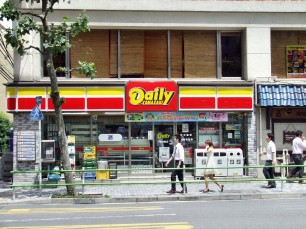
You´ll find a large variety of 24hour convenience stores in Japan. Depending on where you are from, you may already know some of those chains, such as Family Mart, 7Eleven, Lawson and so on.
Those small supermarkets are open 24/7 and will carry a large variety of food, snacks, sweets, icecream, drinks, beer, softdrinks, even meals which the staff can heat up for you if you like to. You can find those “konbini” on literally every bigger street corner.
Regular supermarkets may be a bit difficult to spot for tourists, especially if you can´t read kanji. Too often those are “hiding” in the basement of a department store or on one of a building´s top floors, so convenience stores are for sure the better choice as they are easier to spot and larger in numbers.
The quality of the food is very good, no matter if you´d like to buy one of the delicious sandwiches, desserts, puddings, bananas, bread, chips, soups or a hot sausage on a stick in the “to-go” version, it´s all of outstanding quality. The staff is polite and helpful, too.
2. Drugstores
Drugstores are the cheaper alternative to the higher priced convenience stores, but by nature do carry a slightly different range of products. Yet you can also buy some snacks, sweets and (health / sports) drinks in here at a very good price. The toiletries are also cheaper than in a convenience store.
3. Telephones

Green telephones accept coins and prepaid phone cards (which you can also buy at the konbini) and are domestic phones, which means you can solely reach domestic landlines and mobile phones within Japan.
For international calls, there are special IC telephones available, for example by NTT or KDD. In order to dial an overseas number, you´ll have to use the 001 prefix, then your country code and your area code without the “0” and respective phone number.
For example:
001 + 0044 + xxxxxx for UK
001 +0049 + xxxxxx for Germany
001 +0033 + xxxxxx for France
and so on.

For IC phones, there should be special card vending machines located next those phones where you can buy a prepaid card with which you can make calls. Most bigger hotels will offer IC phones for you to use in their basement or ground floor. There are also manuals available in English language.
Here´s a KDD calling card:
And its NTT counterpart where you will have to tear off an edge before using it:
4. Vending Machines


No matter if cigarettes, icecream, hot and cold beverages or even T-Shirts and books. You´ll find such vending machines literally everywhere in Japan.
Drinks are usually being sold in either 0,33l or 0,5l cans or bottles, for a price of between 100 and 180 Yen each. There is a large variety of drinks available, ranging from Western brands such as Coca-Cola or Pepsi to international brands such as Orangina to Japanese ones. No matter if mineral water, cola, lemonade, coffee, sports water, vitamin drinks or tea, you´ll get all kinds of hot (red label) and cold (blue label) beverages there.
Those vending machines are coin operated, but in general also accept bills and some also your Suica/Icoca magnet card.


The above picture to the left shows an icecream vending machine, the picture to the right is another great idea : books2go. On this vending machine, you can even buy books by the push of a button!
5. Banks, credit cards and ATM machines
You won´t have trouble paying with your credit card in Japan. Hotels, taxis and shops will accept the major credit cards such as Amex or Visa.
When trying to withdraw money from one of the ATM machines, make sure the logo of your card is being displayed on the sticker (located on the glass door of the entrance).
For several years, it has been troublesome to withdraw money with Maestro / Mastercard cards. In between, the government intervened so that Maestro / ec / Mastercard owners can withdraw money in 7Eleven stores. There is an ATM machine located inside 7Eleven convenience stores, those can be also set to English language support.
6. Shinkansen



Japan has most comfortable, fast and punctual express trains being called “Shinkansen” or “Bullet Trains.” It´s quite an experience to take it. Very clean and luxurious. The staff will be selling snacks and beverages in there, which makes it feel a bit like an airplane.
There are several types of Shinkansen, e.g. for West – East Japan (Tokaido/ Sanyo) depending on the speed:
1. Nozomi (Tokyo -> Osaka in 153 minutes)
2. Hikari (Tokyo -> Osaka in 173 minutes)
3. Kodama Shinkansen (Tokyo -> Osaka in 4h+)
Depending on the route (e.g. Tokyo-Nagano), there are Hayate, Yamabiko, Nasuno, Komachi, Tsubasa, Toki, Tanigawa and Asama Shinkansen available.
As mentioned, those high-tech trains are really fast (350 miles in less 3 hours), but this comes with a price. A single ticket costs between 12.000 and 13.000 Yen from Osaka to Tokyo. That´s why I really recommend you to buy a Japan Rail Pass before heading off to Japan (see below for more information about those Rail Passes).

Some trains do offer (Japanese) AC power plugs, with which you can charge your laptop or cell phone.
You´ll find a great tool to look up and plan your trips within Japan here:
 http://www.hyperdia.com/cgi-english/hyperWeb.cgi
http://www.hyperdia.com/cgi-english/hyperWeb.cgi
Hyperdia is also available as free app, you should download it from your app store, it´s definitely useful, wether you may just want to look up the next metro or plan your long-distance daytrip.
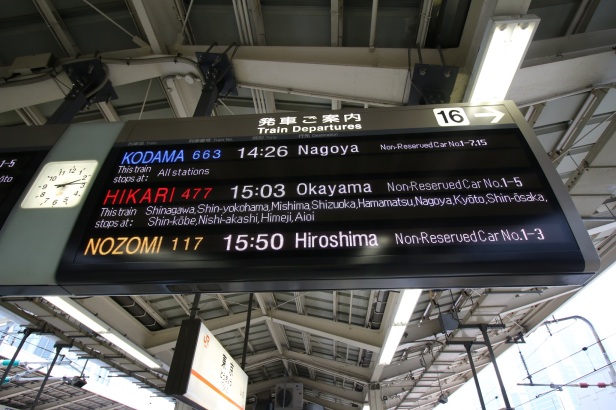
Subway / Metro
If the subway had a status on facebook, I am sure it´s “complicated.” The subway maps do rather look like an electric circuit map, especially for first time visitors it´s highly confusing if you´re not used to navigate in a metropolis. There are several private lines along with JR lines with different fare systems. If you´re looking for an extensive guide to Tokyo subway, please click here.
No matter if Tokyo or Osaka, for example: I can just recommend you to buy yourself one of the prepaid magnet cards which you can use for most subway and also JR lines. These are:
and
You can buy it at the respective ticket machines and charge it with any amount you like. When entering the automatic gates of the station, put the card (you can leave it in your wallet or purse) on the designated area on top of the gate barrier, and the amount for your ride will be automatically deducted. It´s so convenient and much faster than buying a paper ticket each time you´d like to take a train.

Of course you can also buy a ticket for each ride, that´s up to you. Look up your destination on the displayed map (usually above the ticket machines) and insert money. Change will be given after the purchase.

Below a ticket for the Tokyo Yurikamome-Linie (from Shimbashi to Odaiba)

Opening hours
When the subway stations close at night, it depends on the line…most will be closed down after midnight or 1 am such as the Yamanote Line and you can either take a taxi, sleep in one of the infamous capsule hotels or just wait until it opens up again at around 5 am again. Taxi drivers by the way are very polite and definitely will not try to rip you off, so no need to worry. However, there are (higher) fares for the night service, a drive back to your hotel can be quite expensive. If you are not sure about how much it will be, ask for the estimated amount beforehand. The taxi doors will be opened and closed by the taxi driver from the inside.
7. Japan Rail Pass
The Japan Rail Pass enables you to travel across Japan on a flatrate. Shinkansen (except for Nozomi) are “free,” same to JR trains, the Narita Express and ferries.
Only tourists (status “temporary visitor”) can apply for a Rail Pass before their trip to Japan. You´ll have to purchase a voucher at one of the licensed retailers (see links below) before setting off to Japan, and exchange that voucher for the rail pass after your arrival. At the airports and at the larger stations are counters where you will be issued your Japan Rail Pass within just a couple of minutes.
The Japan Rail Pass is available from 1 to 4 weeks.
1 week JRP = 29110 Yen
2 weeks JRP = 46390 Yen
3 weeks JRP = 59350 Yen
That´s for the 2nd class, there is also a Rail Pass for the 1st class available (so-called “Green Cars”). Children (6-11 years) will be able to get a discounted Rail Pass, up to 6 years if they don´t need their own seat, will be for free.
It also includes seat reservations, for which you´ll have to queue at the respective Shinkansen ticket counter…but honestly I never did that as every Shinkansen has several compartments ( usually 1-3 or 1-5) for non-reserved seats. So far, I always got a seat in there.
Being an owner of a Rail Pass includes some sort of a VIP status feeling. You won´t have to use the automated gates at the station but can just pass the booth by holding up your Rail Pass and showing it to the staff.
Depending on where you order the voucher, it will look like one of these:
The exchange is very easy and quick. You just hand your voucher to the staff at the exchange booth (available in the airports, e.g. Narita Airport Terminal 1 + 2, Kyoto Station, Kansai airport, Tokyo Station, Ikebukuro Station, Ueno Station, Nagoya Station, Kyoto Station, Osaka Station, Hakata Station, New-Chitose Airport Station) together with your passport, and within a couple of minutes you will be handed your own personalized Rail Pass.
You can specify a validity range, e.g. getting your pass on Monday for it to be valid from Wednesday on. It´s no problem at all, the staff will ask you when you want to start using it before issuing the JRP.

The design changes from time to time, it´s much bigger than a credit card and will most likely not fit into your wallet or purse. So please take care not to lose it, as it won´t be replaced or re-issued in such a case.
With your Japan Rail Pass, you can take Shinkansen for free. The fast Nozomi/Mizuho/Hayabusa Shinkansen are excluded, you cannot use it with this pass. However, Hikari Shinkansen for example are only a bit slower. Whilst the Nozomi Shinkansen needs 153 minutes to Osaka, the Hikari Shinkansen needs 173 minutes.

It´s actually a bargain. I once had the 3 weeks Rail Pass, and took notes of how many times I used which Shinkansen and also the metro…turned out I saved around 2500$ in total!
You can also use the ferry to Itsukushima with the JRP as well as the JR lines in Tokyo and the Narita Express for free.
How to order the Japan Rail Pass:
As the Rail Pass is being issued in Japanese Yen, its price in your home currency depends on the actual currency exchange rate. You can also check several vendors, the price and shipping charges may vary a bit. Below are three internet sites from which I ordered the Rail Pass before, there were never any problems.
https://www.japan-rail-pass.com/
The vouchers are valid for 3 months from the date of issue, some vendors may take it back for some fee in case you are unable to use it or to travel to Japan.
8. Mail
I do have a lot of respect for Japanese mailmen. There are no street numbers existing, only a combination of numbers that define your district and block, which is very difficult for foreigners (and even locals) to decipher. That´s why most shops provide small maps on their cards or on their internet site with directions. Mail is very fast and reliable. There are several parcel services available.

Most hotels will take care of your letters and postcards, optionally you can also put it in one of the red mailboxes.
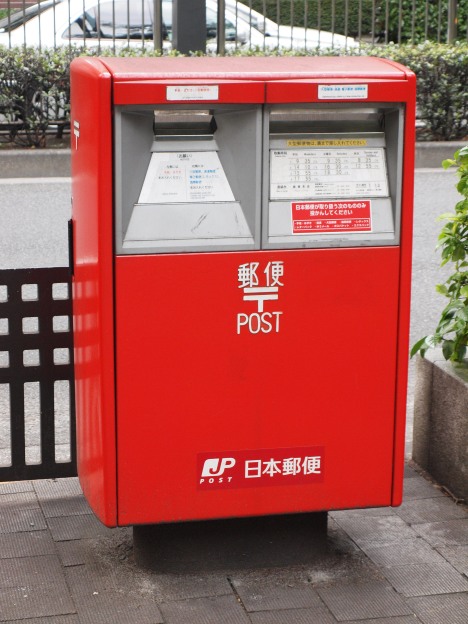
You can buy stamps at the post offices. There are many colorful and cute ones available for you to choose from.

9. Food (this section is currently being updated)
That´s another huge topic, just in short: Japan is much more than Sushi only.
Japan has the most healthiest food in the world. Not too fat, not oversaturated with sugar neither. Me but also foreign colleagues or friends I invited over to Japan all lost weight while staying in Japan, for me in the beginning it´s been around 1kg in 10 days. Takes a bit until it will balance on a normal level, and still I could basically eat what I wanted (including sweets and desserts) and still lost some weight.
Raw fish isn´t everyone´s beef, a lot of people I´ve talked to really thought that there´s mostly Sushi available in Japan, or that Japanese would eat only Sushi…oh well.
In general, when it comes to having lunch or dinner, it´s very easy to chose your meal, as most restaurants in Japan will have real-looking plastic replicas of their dishes in the window, so you can already see and choose what you´d like to eat.

If you are in a hurry, you can also try one of the meals sold in the konbini. You´ll find the dishes (ranging from Spaghetti to Japanese noodles or katsu, for example) in the refrigerated display case, the staff will heat it up for you and you can take it out. It´s of surprisingly good quality, but certainly you should give the restaurants a try.
* Sushi & Fish

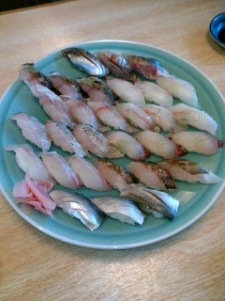
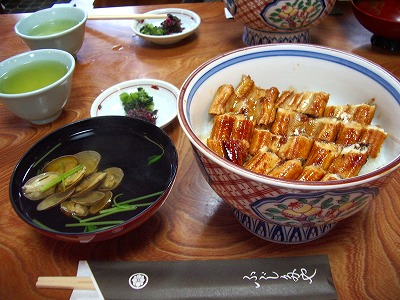
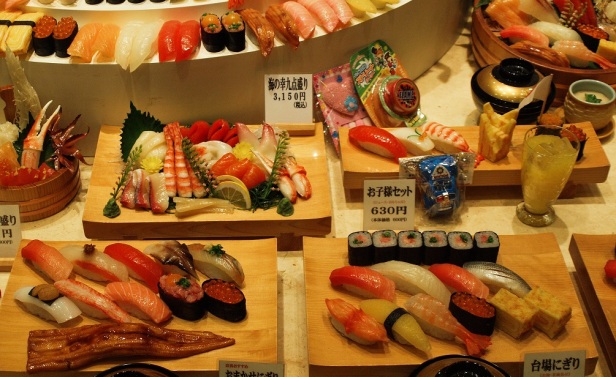
Fast, convenient, delicious: the famous “running sushi” restaurants offer assembly lined sushi plates moving in front of your eyes. Just take what you like to eat. Tastes great and is inexpensive. As for most islands, you will find a variety of different types of seafood to enjoy, no matter in a restaurant or in a supermarket

* (Ton-)Katsu
Great for Western tongues, this tastes like cutlet or Schnitzel, and is mostly offered with rice and miso soup, or in combination with Japanese curry.
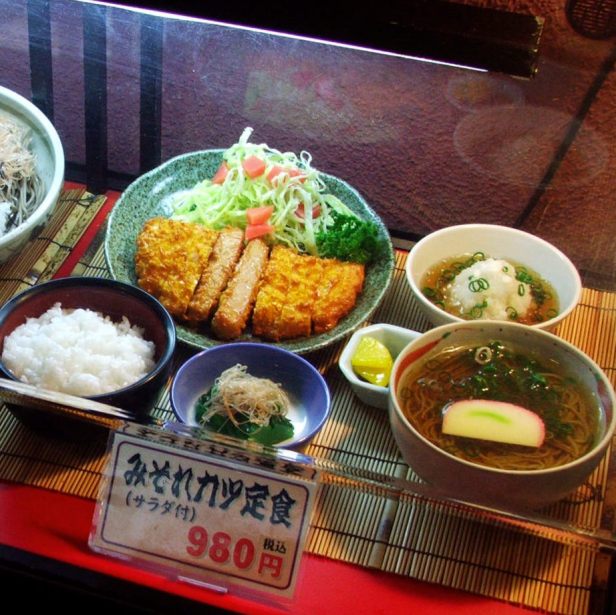
* Japanese Curry
Japanese curry or in combination with tonkatsu also available as (ton)katsucurry, is milder and tastes completely different to Indian curry. It´s a stew with meat, vegetables, potatos, mushrooms and often offered in a variety of spice levels. So please take care, I´m really good with spicy food but in a curry restaurant once chose level 3 (out of 7) and could barely finish it without feeling steam coming out of my ears.
* Omuraisu
An omelette with rice, meat / chicken filling, tastes great as well. An interesting composition for sure, at least I haven´t eaten anything like this before, but really got to like it.
* Soba
Those Japanese noodles are delicious
* Yakitori
This is usually grilled, chicken skewer, available in many varieties, not only with chicken but also beef or even liver.
* Desserts
Icecream is available in many (exotic) flavours. You´ll see it being offered in many varieties and for the Western tongue rather unusual types. For example, there´s sakura icecream, lavender icecream or a crushed ice version with syrup available. Of course you can get soft ice cream, Häagen-Dasz or Italian gelato version, too.
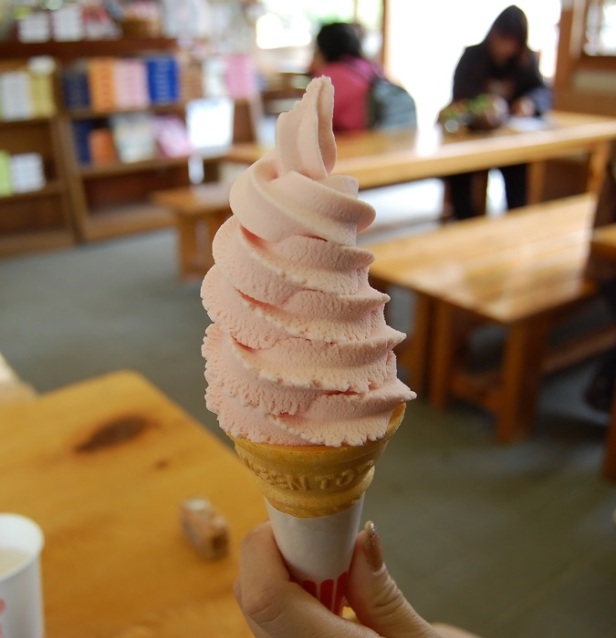

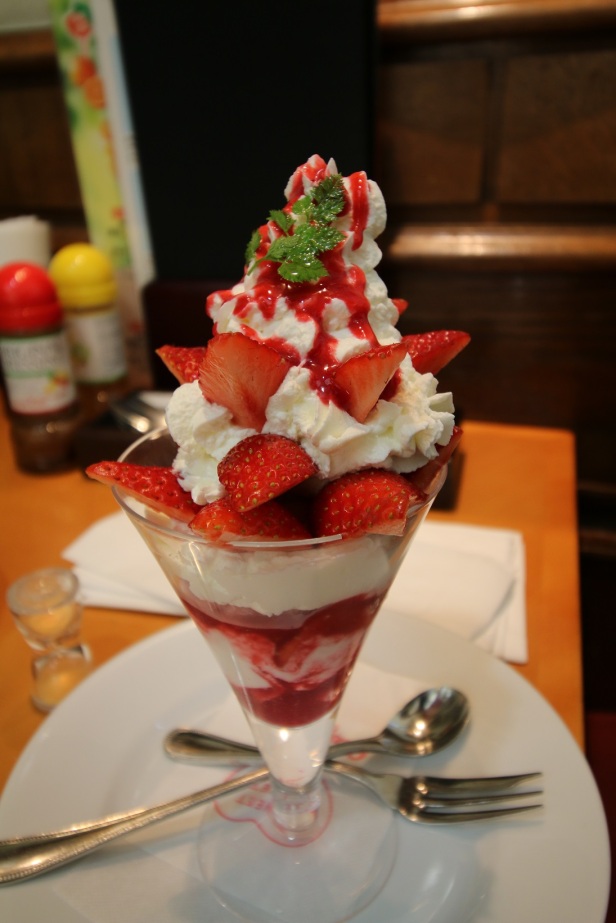

A piece of cake is often very small in size, and not really cheap, but on the other hand it tastes just delicious. Here´s a piece of cheesecake I bought the other day for 300 Yen. Battery is for size comparison 😉

Some chefs do get very creative when it comes to food. For examples, you can also visit my blog entry here.
10. Weather & Travel seasons
In my eyes, the best seasons to visit Japan are spring & fall. Especially around sakura, the cherry blossoms season, Japan´s nature is overwhelmingly fascinating and those alleys and parks seamed with cherry blossom trees are just unearthly beautiful. Usually, sakura is around the end of March to the beginning of April, but this also depends on the geographical location.
The rainy season hits Japan around June/July each year, during this time it may rain heavily, and afterwards it´s getting as humid as in a sauna. Thus, summertime is not too comfortable. I´ve never encountered such a high humidity before, it´s as if you are breathing water. I was unlucky to experience this during my first visit to Japan in 2001. In between I got used to Japanese summertime. It took me several years, but still it´s far from being comfortable. Shops and metro trains are heavily airconditioned, same to hotels and public buildings, but if you´re not used to the constantly changing hot-cold conditions, it will be very easy to catch a cold. At night, especially in the cities, it won´t cool down much, in fact it often seems to be just as hot and humid than during daytime. Quite plausible, as all the concrete keeps collecting the solar energy just to release it again after nightfall. It´s slightly more comfortable in Kansai than in Tokyo (or on Hokkaido), but still, if you are affected by heat and humidity, you should consider visiting Japan in another season. Many times I´ve met tourists who were really suffering from those climate conditions.
At the end of summertime, it´s the season of the typhoons. And if one hits your location, it doesn´t feel comfortable either. Even subway stations may be closed down, same to airports. Once I got the last flight out of Kansai before they closed it down due to a typhoon.
However, if you don´t mind the humidity, summertime isn´t too bad at all. There are many “hanabi” (fireworks) and festivals held in summertime, as well as the “tanabata” and obon.
During September, it all starts to cool down and it quickly gets getting more comfortable again. That´s why autumn is another beautiful season to enjoy in Japan. Especially the forests are so beautiful in all those shades of red, yellow and brown.
Wintertime is very comfortable. This depends on where you are from, but in general Tokyo and Kansai are not as cold as most European countries, snow is rare and wouldn´t last long.







